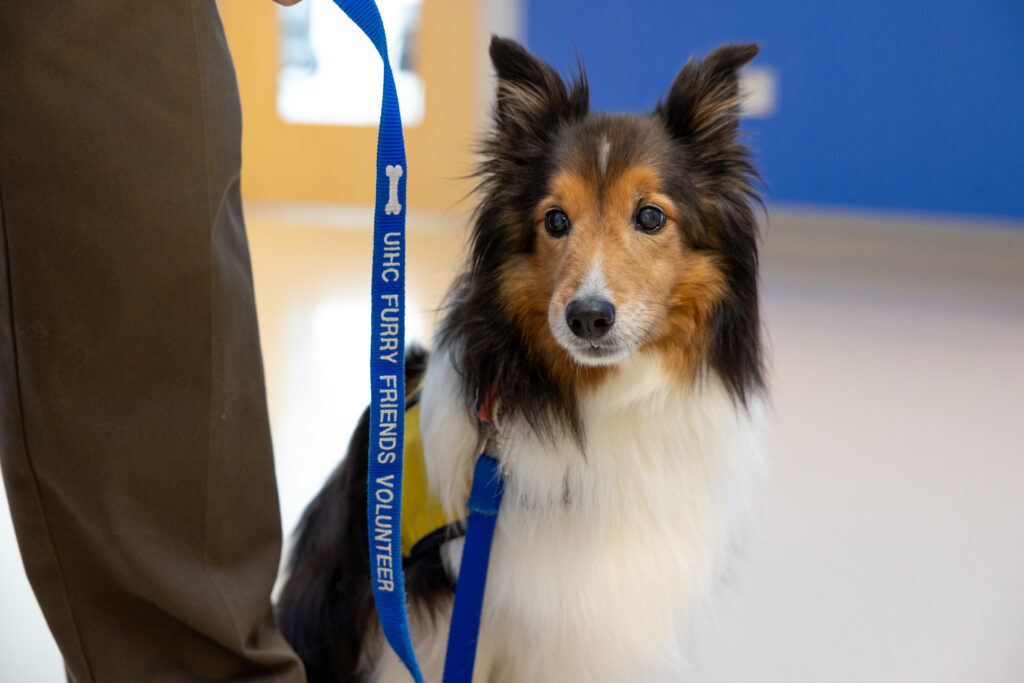Dog hearing aids are assistive devices designed to improve the hearing of dogs with auditory impairment. Veterinarians prescribe them after thorough assessments.
Hearing loss in dogs can greatly affect their quality of life, reducing their ability to communicate with their owners and respond to environmental cues. Just like humans, dogs can suffer from various types of hearing impairments, whether due to old age, genetic predispositions, or health conditions.
To address this, dog hearing aids have been developed to help our canine friends. Their use requires proper fitting and training to ensure the dog’s comfort and ease of adjustment. These devices amplify sounds, allowing dogs to better perceive auditory signals and interact with the world around them. Owners looking for ways to help their hearing-impaired dogs should consult with a veterinarian to see if hearing aids are an appropriate solution.
Understanding Dog Hearing Loss
Hearing is a vital sense for dogs, contributing to their ability to communicate and interact with the world. Dog hearing aids are emerging as a groundbreaking solution for pets suffering from hearing impairment. To fully comprehend the significance and potential of these devices, it’s essential to explore the intricacies of canine auditory health.
Signs Of Hearing Impairment In Dogs
Detecting hearing loss in dogs can be subtle, but there are recognizable signs that may indicate a problem. Owners should be vigilant for:
- Lack of response to familiar sounds or commands
- Increased startling or confusion
- Overt signs of anxiety or disorientation
- An observable reliance on other senses, such as smell or sight
- Barking excessively without apparent trigger
Common Causes Behind Hearing Loss
Hearing loss in dogs can stem from various factors. Common causes include:
- Infections: Chronic ear infections can lead to damage and hearing loss.
- Aging: Just like humans, aging can diminish a dog’s hearing capability.
- Injury: Trauma to the ear or head can affect auditory function.
- Genetics: Some breeds are more predisposed to hearing issues than others.
- Exposure to loud noises: Sudden or prolonged exposure can result in hearing damage.
Impact On A Dog’s Life And Behavior
Hearing loss can significantly alter a dog’s behavior and overall well-being. Affected dogs may:
| Behavioral Change | Possible Reason |
|---|---|
| Become more withdrawn or less social | Uncertainty or inability to hear approaching people or animals |
| Show increased levels of aggression | Fear or surprise due to not hearing others approach |
| Exhibit signs of depression | Frustration or isolation stemming from communication barriers |
| Have disrupted sleep patterns | Lack of auditory cues leading to confusion between day and night |
Understanding these impacts can empower owners to seek appropriate remedies like dog hearing aids, which can significantly improve their pet’s quality of life.
Dog Hearing Aids: A Life-enhancing Tool
Imagine a world where a gentle whisper or the rustling of leaves brings no joy to your canine companion. Hearing impairments in dogs can lead to a life of silence and disconnection. Thankfully, advancements in veterinary technology have brought forth an incredible solution — dog hearing aids. This game-changing device is more than just an accessory; it’s a life-enhancing tool that reconnects our furry friends with the world around them.
How Dog Hearing Aids Work
Dog hearing aids function similarly to human devices, yet are specially tailored for the unique contours of canine ears. They work by:
- Amplifying sounds to make them audible to the dog.
- Converting sound waves into digital signals.
- Customizing amplification levels based on the severity of hearing loss.
Fitting and calibration are crucial, ensuring the hearing aids are comfortable and provide the correct level of sound enhancement for each individual dog’s needs.
Benefits Of Using Hearing Aids For Dogs
The advantages of equipping dogs with hearing aids are substantial. Owners witness a dramatic improvement in their pets’ quality of life, with benefits such as:
- Enhanced awareness of their surroundings.
- Reduced anxiety and increased social interaction.
- Ability to respond to verbal commands.
- Renewed sense of normalcy and adventure.
- Strengthened bond between pet and owner.
Success Stories And Improved Quality Of Life
Countless success stories illustrate the positive impact hearing aids have on dogs. From aged companions regaining their vigour to young pups given a fresh start, the transformations are heartwarming. One such tale features a Spaniel named Charlie, who:
- Regained his playful spirit after losing interest in his favourite activities due to hearing loss.
- Became more alert and engaged with his family.
- Could enjoy walks and outdoor adventures safely once more.
These successes spotlight the life-changing capabilities of hearing aids, making them a vital tool for dogs and their owners to explore.
Selecting The Right Hearing Aid For Your Dog
Welcome to the comprehensive guide on selecting the right hearing aid for your furry friend. Dogs, like humans, can experience hearing loss due to various reasons – be it age, genetics, or exposure to loud noises. Fortunately, advancements in veterinary care have made it possible for our canine companions to benefit from hearing aids. Choosing the perfect device requires careful consideration to ensure it meets the needs of your pet. Let’s explore how to enhance your dog’s quality of life with the best hearing aid option.
Types Of Dog Hearing Aids Available
Understanding the different types of hearing aids for dogs is pivotal to making the correct choice. Just as technology has evolved for humans, so too has it for canine auditory assistance. Here’s a snapshot of the varieties:
- Analog Hearing Aids – Classic devices that amplify all sounds, not always the most precise.
- Programmable Analog Hearing Aids – These provide more customization options to better suit individual needs.
- Digital Hearing Aids – The most advanced, offering the ability to fine-tune amplification and filter background noise.
Factors To Consider: Size, Comfort, And Effectiveness
Selecting the right hearing aid also involves several important factors:
- Size: The hearing aid must fit snugly without causing discomfort. It’s vital to choose a size that’s appropriate for your dog’s breed and ear shape.
- Comfort: Your dog will wear this device for a significant part of the day. Ensure the material is comfortable and doesn’t irritate your dog’s skin.
- Effectiveness: Above all, the hearing aid should provide a noticeable improvement in your dog’s hearing capacity, helping them interact with their environment more effectively.
It’s essential to balance these elements to ensure the best outcome for your pet’s auditory health.
Consulting With A Veterinary Audiologist
The expertise of a veterinary audiologist is invaluable in this process. These specialists can conduct comprehensive hearing tests to ascertain the extent of hearing loss and give professional advice on the most suitable hearing aid. A tailored approach ensures your dog receives exactly what it needs for improved hearing. During consultations, audiologists can also teach pet owners how to properly maintain and care for the hearing aids, maximizing their lifespan and effectiveness.
Tailoring The Experience For Your Furry Friend
Tailoring the Experience for Your Furry Friend is essential when considering dog hearing aids. Just like humans, our canine companions need personalized care to ensure their hearing aid provides the best possible support. It’s not just about restoring their ability to hear; it’s about enhancing their overall quality of life. There’s a symphony of sounds in the world that your pet may be missing, and the right hearing aid can bring that music back into their lives. Thus, let’s delve into how you can customize this experience for maximum benefit.
Customizing Hearing Aids For Optimal Performance
Ensuring your dog’s hearing aid fits perfectly is crucial to its effectiveness. It requires a blend of technical precision and understanding of your dog’s unique needs. Customization involves:
- Detailed Ear Canal Impressions: These are taken to create a hearing aid that fits your dog’s ear shape snugly and comfortably.
- Frequency Tuning: Dogs hear at different frequencies than humans. A specialized veterinarian performs tuning to align with your pet’s hearing range.
- Volume Adjustments: The device is set at volumes that are loud enough to aid hearing without causing discomfort or damage.
Training Your Dog To Accept And Use The Device
Training is a gentle process that requires patience and positive reinforcement. Here’s a step-by-step approach to acclimating your dog to their new hearing aid:
- Start by allowing your dog to get familiar with the hearing aid without wearing it, using treats for positive association.
- Gradually increase the amount of time your dog wears the device each day.
- Ensure each experience is positive, ending training sessions before your dog shows signs of irritation.
Remember, consistent and short training sessions are the key to success.
Monitoring And Adjusting Settings For Comfort
Continuous monitoring after your dog starts using the hearing aid is vital. Watch for signs of discomfort or irritation, which could indicate the need for a setting adjustment. Regular check-ins with a professional can help in:
| Aspect | Monitoring Strategy |
|---|---|
| Comfort | Observe your dog’s behavior for signs of distress or avoidance. |
| Fit | Check for redness or soreness around the ear that could suggest an ill-fitting device. |
| Performance | Assess whether your dog is responding to sounds appropriately. |
Adjustments and regular maintenance are a part of the journey. With these steps, you can ensure your pet feels comfortable and connected to the vibrant auditory world around them.
Maintenance And Care Of Dog Hearing Aids
Dog hearing aids are a significant investment in your furry friend’s quality of life. To ensure their effectiveness and longevity, consistent maintenance and care are crucial. Just like with human hearing aids, there are practices you should adopt to keep these delicate devices in top working condition, thus providing your dog with the best auditory support possible.
Cleaning And Daily Care Routines
Effective cleaning and daily care routines are the bedrock of hearing aid maintenance. These steps often include:
- Gentle wiping of the device with a clean, dry cloth to remove wax and moisture.
- Using a soft brush designed for hearing aids to clear any debris from the microphone and speaker areas.
- Checking and replacing filters regularly to prevent clogging and sound distortion.
- Ensuring hydration control by using a dehumidifier box overnight, particularly in humid climates.
By integrating these tasks into your daily routine, you can help extend the lifespan of the hearing aid and keep it functioning correctly for your dog’s needs.
Handling Repairs And Technical Issues
Even with meticulous care, your dog’s hearing aid may encounter technical issues or require repairs. Take note of the following:
| Action | Response |
|---|---|
| Check the battery | Ensure the battery is properly inserted and functioning. Replace if necessary. |
| Inspect for damage | Look for any signs of visible wear or damage. Contact your veterinarian or audiologist if you find any. |
| Contact support | If issues persist, use manufacturer support for guidance or repair services. |
Handling these issues promptly can prevent minor problems from escalating and affect the aid’s performance.
When To Replace Or Upgrade The Device
- Noticeable decline in performance: If the hearing aid is not providing the same level of auditory assistance.
- Advanced wear and tear: If the device show signs of significant wear or damage.
- New technology: If newer models offer improved functionality or features that could benefit your pet.
- Changes in hearing ability: A change in your dog’s hearing condition may necessitate a different type of hearing aid.
Stay attentive to these signs as they can indicate the need for a device replacement or upgrade to better suit your dog’s needs.

Credit: www.everydayhealth.com
Frequently Asked Questions Of Dog Hearing Aids
Do Dogs Really Need Hearing Aids?
Hearing aids for dogs are recommended for those with hearing loss. They can improve the quality of life for aging canines or those with specific auditory conditions. These devices are specially tailored to fit a dog’s ear canal and hearing range.
How Do Hearing Aids For Dogs Work?
Dog hearing aids are designed to amplify sounds, much like human devices. They are adjusted to suit a dog’s hearing frequency. The aids are small and fit inside or behind a dog’s ear, allowing them to pick up more sounds and live more comfortably.
Are There Different Types Of Dog Hearing Aids?
Yes, there are various types of hearing aids for dogs, including behind-the-ear (BTE) and in-the-ear (ITE) models. Veterinarians can help select the appropriate type based on the dog’s hearing loss severity, ear shape, and lifestyle needs.
Can Any Dog Use Hearing Aids?
Not all dogs are suitable for hearing aids. It’s crucial to consult with a vet to determine eligibility. Factors include the dog’s hearing condition, temperament, and ability to tolerate wearing the device.
Conclusion
Understanding the needs of our canine companions extends to their hearing health. Dog hearing aids provide a viable option for dogs experiencing auditory challenges. They enhance not only sound but also the quality of life for our furry friends. Embrace this advancement; let’s ensure our dogs receive the care they deserve.






